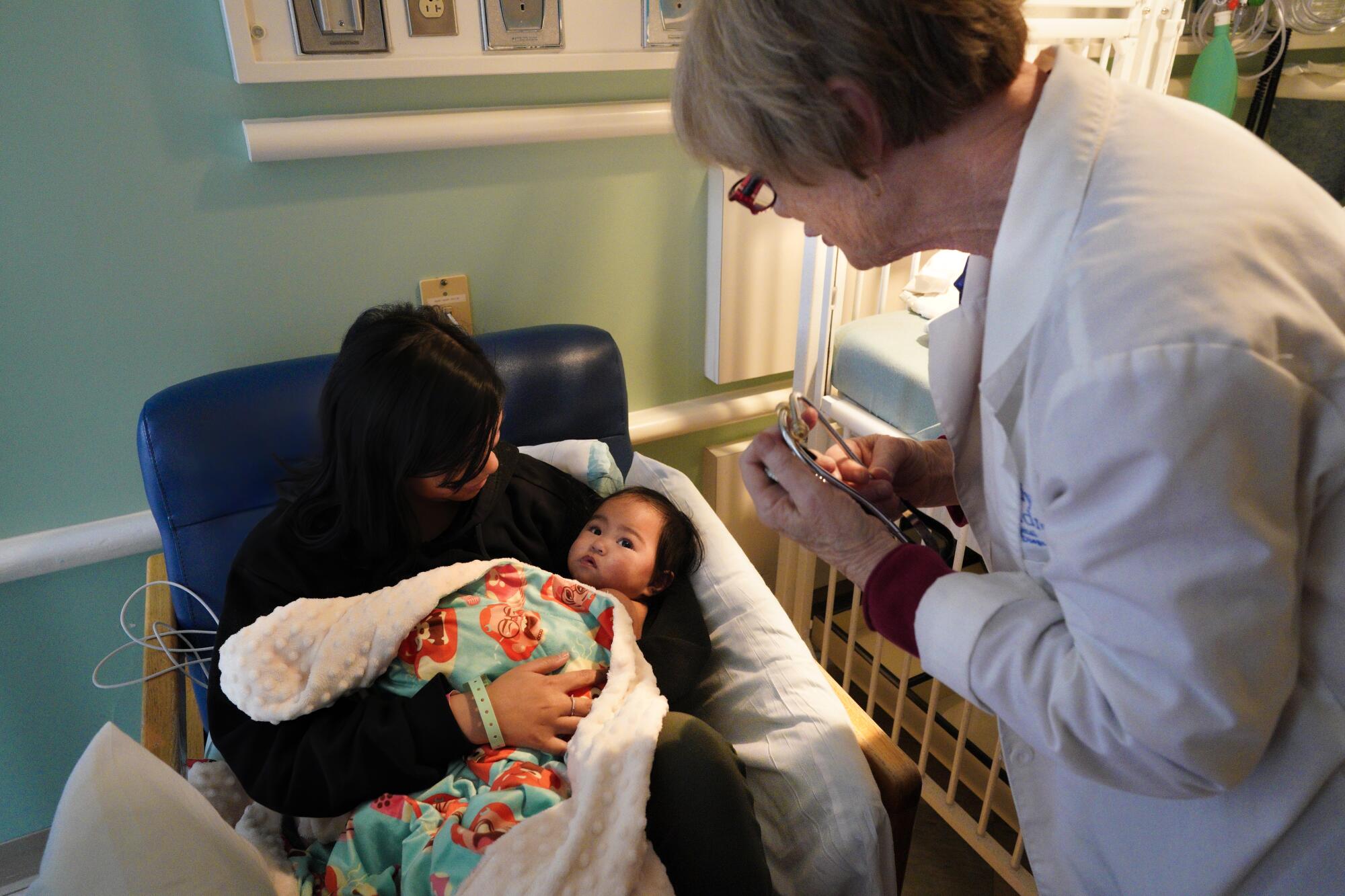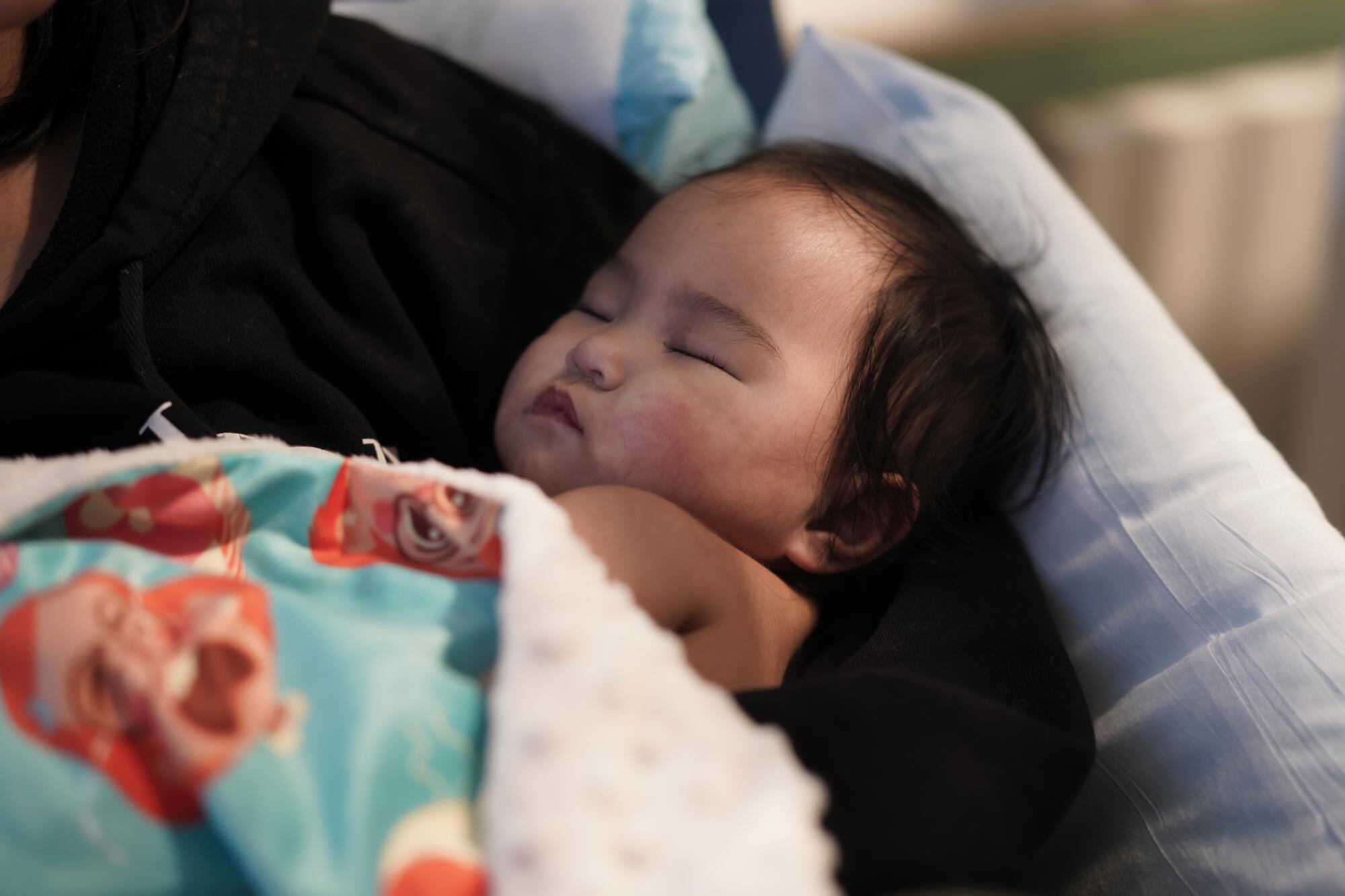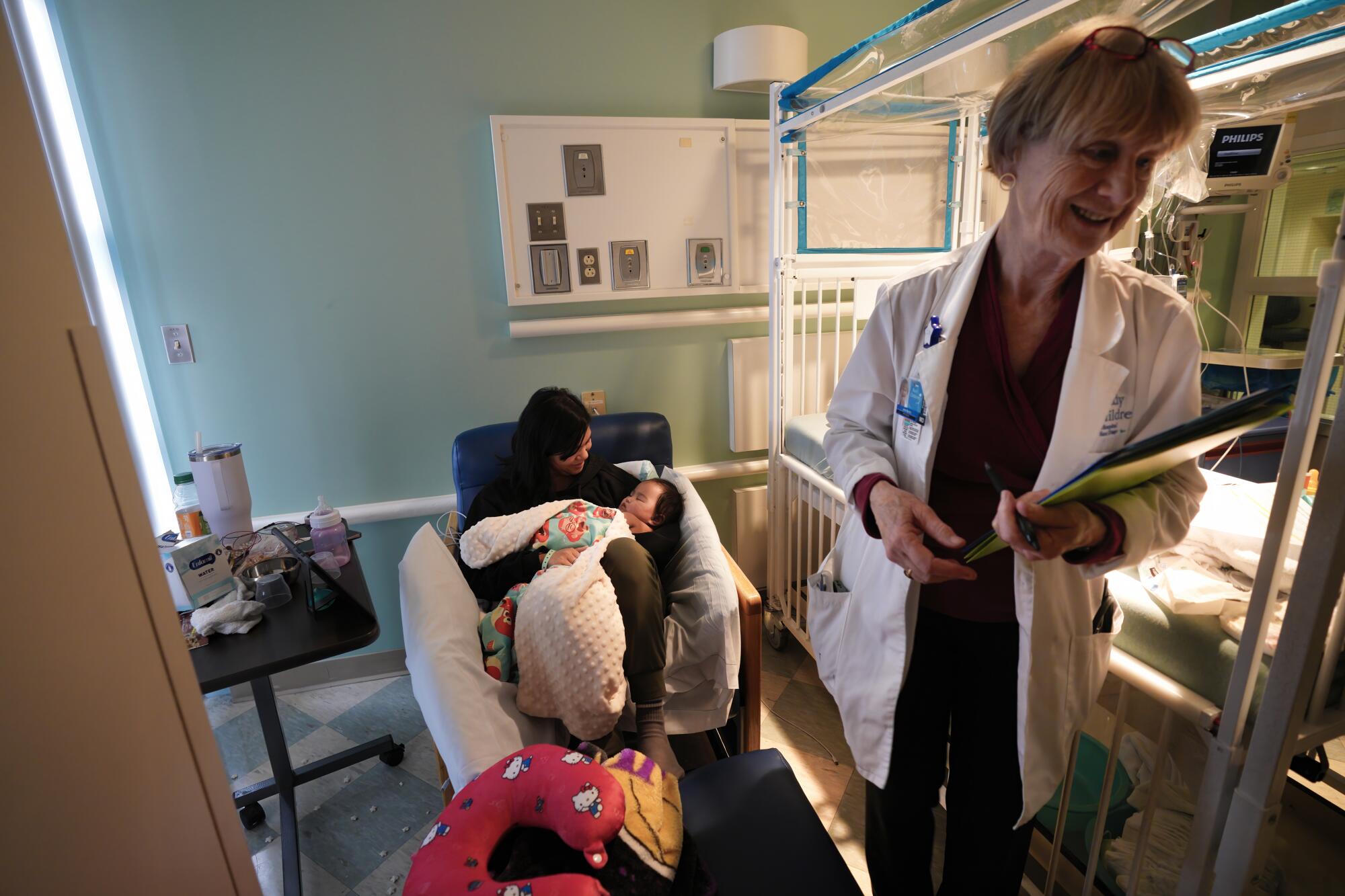
Mysterious condition that causes serious inflammation of blood vessels returns after dropping during pandemic
After experiencing a lull during the COVID-19 pandemic, clinicians at Rady Children’s Hospital have been somewhat surprised at the number of young children diagnosed with Kawasaki disease in the new year.
In January, said Dr. Jane Burns, director of Rady’s Kawasaki Disease clinic, 15 children were diagnosed with KD which, because it causes severe inflammation of blood vessels, is the No. 1 cause of acquired heart disease among U.S. children.
While it’s not much compared to the hundreds and thousands of flu cases that affect children every year, 15 diagnoses in January is significantly more than is usually the case.
“Normally, we see about 10 in January,” Burns said, adding that while complete nationwide numbers are not available, anecdotal reports from colleagues in other large cities across the nation indicate a similar trend.
“The impression is that KD [Kawasaki Disease] is surging across the U.S.,” Burns said.
The end of the pandemic likely has something to do with the current Kawasaki Disease trend. During the pandemic, Burns noted, the number of diagnoses in most children fell 50 percent, likely due to masking and social distancing rules and school closures. Now that those interventions are largely over, the disease is returning, reinforcing the notion that it is something in the environment, some as-yet-unidentified something in the air kids breathe, that causes persistent high fevers, bloodshot eyes, red rash, swollen hands and feet and, sometimes, a “strawberry” tongue.

Joanne and Leon Pisa of National City noticed many of those symptoms in their 8-month-old daughter Ellie, causing them to rush her to urgent care with a 104 degree fever on Sunday, Feb. 4. When the fever and a rash refused to resolve, she was admitted to Rady through the hospital’s emergency department on Wednesday, Feb. 7.
The signs were clear enough for the infant’s medical team, overseen by Burns, to start her on intravenous immunoglobulin, a concoction of human antibodies often used to help many types of patients fight off infections. In this case, Burns explained, the proteins in the infusion, most commonly called “IVIG,” are able to calm things down, especially with respect to neutrophils, white blood cells that Kawasaki Disease for some reason whips into a harmful frenzy.
“It kills off neutrophils, and those guys are bad actors in this disease, like gasoline on a fire,” Burns said. “And the stem structure of the (IVIG) molecule gets chewed up and presented to the immune system, and that boosts the natural anti-inflammatory system in the body.”
Most kids who get IVIG early enough after symptoms appear — generally within a few days — are able to avoid lasting cardiovascular damage. Hospitals use sound wave imaging — an echocardiogram — to examine the heart after the inflammation subsides, looking for telltale signs of weakened regions that could cause a deadly aneurysm in the future.
On Friday, Burns walked into Ellie’s room, clipboard in hand, and delivered the news that the first echocardiogram looked normal. A second scan performed in a few weeks would still be necessary to make sure, but the odds were solidly in the young lady’s favor.
Relief was immediately visible on Joanne Pisa’s face.
“That was really, really scary, especially with this being my first child,” she said. “You just don’t know what to expect when something like this happens.”
For other parents, Pisa recommends keeping an eye on hands and feet. They are known to show signs of Kawasaki Disease, and they were definitely screaming “this is more than a fever and a rash” when Ellie got sick.
“Her hands were kind of purple and red, and they were swollen; that’s a sign that is really good to look for,” Pisa said.
Being of Filipino and Laotian heritage, Ellie is at greater risk of developing Kawasaki Disease than is the general population as are all of Asian and Pacific island descent.
The question everybody wants to know and has wanted to know since 1976 remains unanswered.

Burns, who also directs the Kawasaki Disease Research Center at UC San Diego, and her colleagues have criss-crossed the globe over the past four decades trying to determine what exactly triggers this cascade of harm that disproportionately affects children.
Recent research, including a paper authored by Burns’ group with climate experts at the Scripps Institution of Oceanography, hypothesized that part of the cause may be dust born on strong winds from agricultural areas in China. Other hypotheses from even further back, ones that Burns was involved in exploring, suggested carpet in homes might be a trigger.
Here, COVID-19 turned out to be a kind of unintentional laboratory. While Kawasaki Disease incidence in kids fell by 50 percent among older kids, diagnosis rates in the very youngest infants remained steady.
“The conclusions are that babies, young infants, are being exposed in the home, because they were not masking,” Burns said. “They were too little to wear masks.”
At the same time, there also seems to be something triggering older kids. Now pre-COVID-19 Kawasaki Disease rates are returning as masks and other pandemic protocols have fallen.
Burns and Scripps recently collaborated with Japanese colleagues to analyze the entirety of that country’s record of diagnosed Kawasaki Disease cases, going back to the 1970s, and found that interesting patterns emerged, especially when examining how the disease affected children of different ages.
According to an article recently published online, researchers found that while the incidence of Kawasaki Disease has increased among all age groups, the pace was significantly faster for those age 3 and older. While incidence since the 1990s has roughly doubled overall, there has been a “five-fold increase” in Japan for kids age 3 and older since 1990.
Older kids, researchers note, have much more complex social lives, leaving their homes for daycare, school and other activities not yet in play for the youngest cohorts.
Researchers state that “the remarkable increase and spatial coherence of KD incidence in children and adolescents aged 3 years and older suggests that environmental factors were associated with increased exposure to a KD trigger.”
Daniel Cayan, a climate scientist at Scripps and one of the paper’s co-authors, said that while there is still solid reason to believe that whatever triggers Kawasaki Disease likely arrives in the respiratory system, the differences between infants and children during the pandemic is causing some rethinking about how those triggers are encountered.

“It’s not a resounding signal, but some of this has led to some possible rethinking along the lines that there may be an element of human-to-human transmission,” Cayan said.
Of course, older kids, those who were wearing masks during the pandemic, also suggest an environmental trigger.
“It sort of leads you to explore the fact that there might not be just a single source or a single agent but, you know, a variety of provocations that result in this reaction we seek with KD,” Cayan said.
The scientist said he does not believe the research effort is yet on the cusp of answering this nearly 50-year-old riddle. But, he added, the patterns gleaned in examining decades of diagnoses in Japan can help guide deeper research, especially in more closely investigating and monitoring just what is being breathed and where.
“I think that things have come a long way in the past 10 years, but I think there’s still a ways to go yet,” Cayan said.
Get Essential San Diego, weekday mornings
Get top headlines from the Union-Tribune in your inbox weekday mornings, including top news, local, sports, business, entertainment and opinion.
You may occasionally receive promotional content from the San Diego Union-Tribune.
